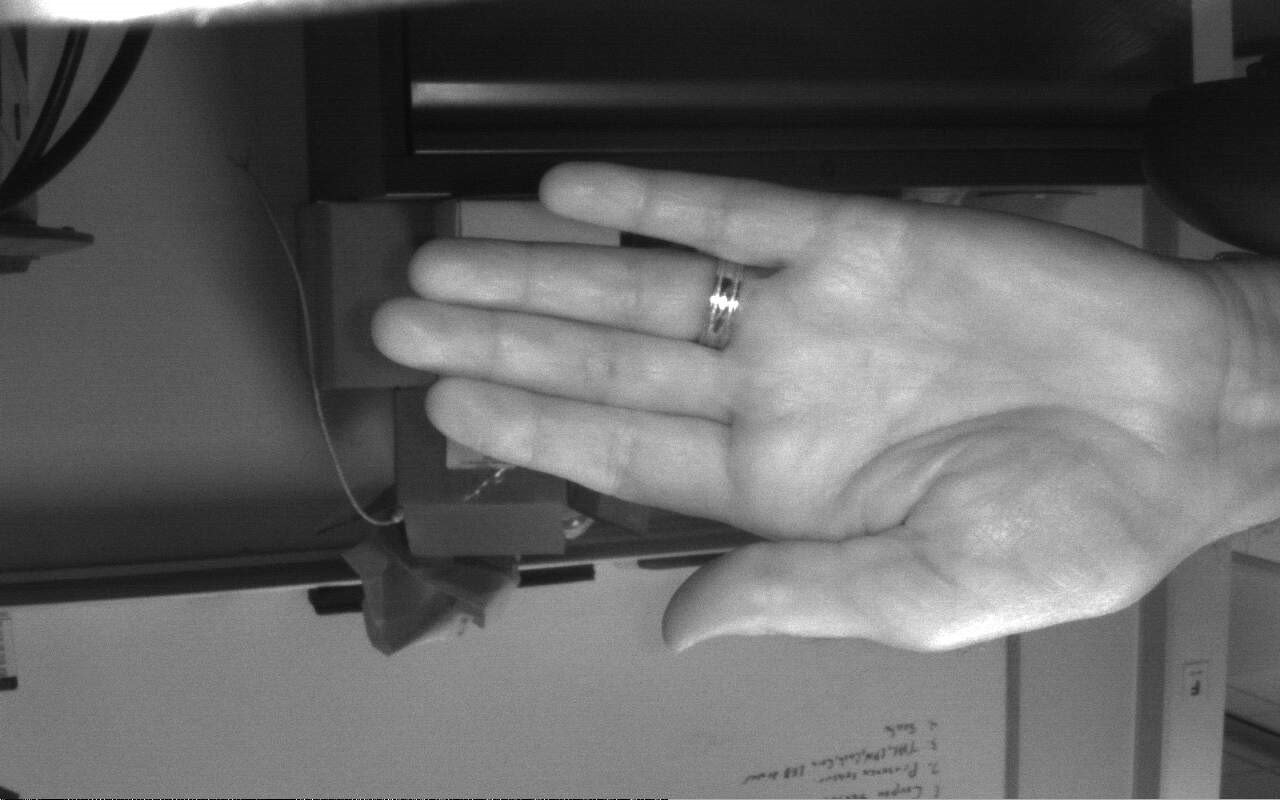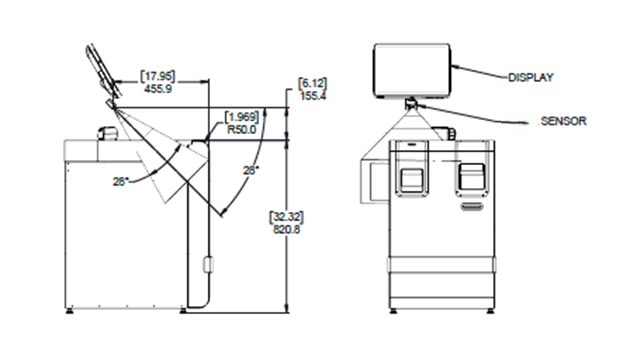Authors:
Timothy Crockett, Dan Kelaher, Kimberly Wood
Abstract:
This Disclosure proposes using a lens or mirror to separate the edge of a camera view to use for presence sensing.
Background:
While investigating if we could use a camera type barcode scanner as a proximity sensor by changing the angle so that a portion of the camera view looked over the edge of the table, we found the extreme angle of the reader made the barcode reading angle less optimal resulting in fewer successful barcode reads. The solution is to use a lens or mirror to redirect a portion of the camera view to the desired angle while still pointing the reader to an optimal reading angle for reading barcodes.
Description:
Use a mirror or lens to redirect part of the bar code readers camera view to the desired proximity angle and use the bar code reader's image change detection to report the presence of a customer.
Demonstrates that an image can be acquired from the barcode reader camera.

Diagram showing Field of View of camera extending beyond the checkout area for presence sensing.

Usages: Self-checkout (SCO) system where a barcode reader is already included in the system but you want to add presence sensing. This allows you to power down parts of the SCO to conserve power and bring them back up when approached by a customer.
Claims: Split camera field of view (FOV) between bar code reading and customer presence detection.
Enabling Technology: Camera based bar code camera where image can also be used to detect motion or presence.
Supporting Art:
US9542582B2 System and method for multi-view imaging of optical codes using chromatic path splitting
https://patents.google.com/patent/US9542582B2/en?oq=US9542582B2
This patent shows how to use multiple mirrors and a dichroic mirror (basically a light filter combined with a mirror) to combine multiple sides and images of a single product in a flat-bed wraparound scanner.
- Of course, the mirrors could be rearranged to look in 2 different outward directions, and to either combine both images on the camera sensor, or to project each of the 2 images on to separate parts of the sensor.
2. Omni directional (360 deg) camera
https://en.wikipedia.org/wiki/Omnidirectional_(360-degree)_camera
- This is a special case but illustrates one way a camera sensor and mirrors can be arranged to allow the sensor to divide its active area with visibility in more than one direction at a time.
TGCS Reference 3124









